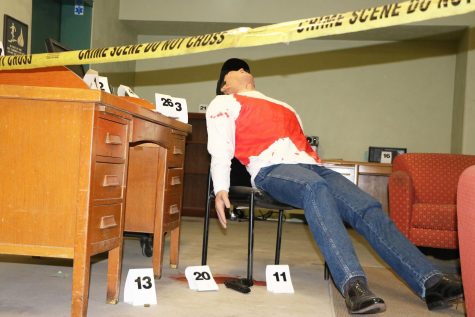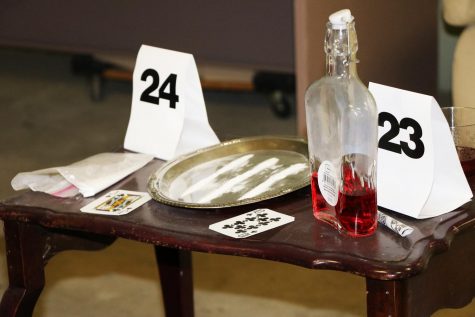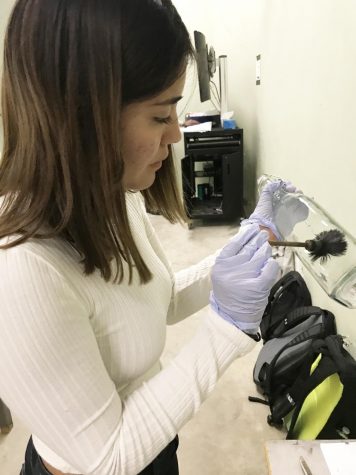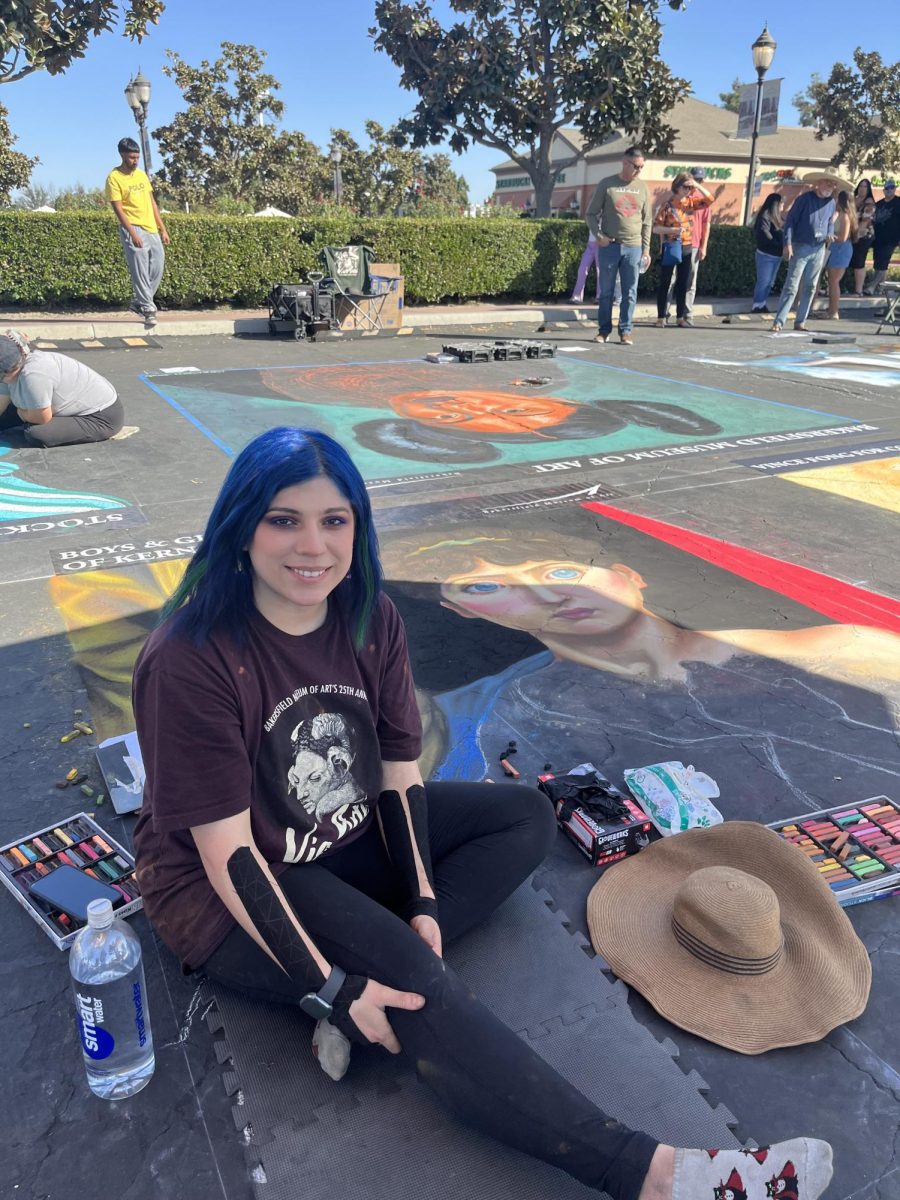BC holds mock crime scene for criminal justice students
November 9, 2018
Criminal Justice Professor Harlan Hunter’s students worked to collect data and evidence in the staged crime lab located in the basement of the Language Arts Building during CSI (Crime Scene Investigation) Week which started Nov. 5.
In the crime lab, a dummy was staged covered in blood, positioned next to a gun. Proxy money, drugs, and alcohol were also spread out across the scene. In teams of four, each student was assigned a specific role and was responsible for collecting their own data and evidence. The team leader served as the lead investigator who overlooked the entire investigation. The technician dusted for fingerprints, the photographer took photos of the scene and marked evidence, and the sketch artist drew the crime scene.

The mannequin behind crime tape at the Crime Scene Lab during CSI week reclines motionless on a chair with a gun on the floor. Numbers are used to label evidence.
“Our main goal is to form a hypothesis, and collect all of the evidence together into a single report with photos and a diagram of the sketched crime scene that is due at the end of the investigation,” Criminology Major Shanna Giurlani said.
“This is the best we can do to mimic a crime scene one would see in the field. One of the things in criminal investigations is the forensics part of it, or what we call CSI, and this is what we are doing here,” Hunter said when asked how the crime lab would benefit and prepare students. “This is how we start to develop a case, by collecting the physical evidence to help us figure out how the crime was committed, who committed it, and under what circumstances.”

Proxy cocaine and alcohol, along with playing cards are marked as evidence at the crime scene lab.
Criminal Justice student Jazmine Mandujano served as the crime scene technician during her group’s visitation. She took a glass bottle found on a table near the dummy to dust for fingerprints. Found prints were then lifted with clear, adhesive tape and transferred to a lift card to preserve them. These fingerprints would ultimately be sent to the lab for a fingerprint analysis to see if a suspect that was already in the system could be identified.

Jazmine Mandujano acts as the crime scene technician as she dusts for fingerprints.
The way that evidence is processed has evolved through the years. “We have so much technology available to us that we didn’t have 30 years ago that allows us to process this stuff more efficiently,” Hunter said. “Like DNA, for example, was a major breakthrough. Technology has allowed us to use body fluids, and other pieces of specimen to identify a suspect.”
CSI work is not all that the students learn throughout the semester.
They also learn arrest procedures, how to go to a judge to submit a search warrant application and to issue said warrant, how to work with the prosecution’s office to prosecute, and even how to present the physical evidence to a jury.
“The CSI is just part of the work. The work continues all the way to the time this person actually gets convicted, sentenced, and ultimately put on appeal. What you see here are really just the stepping stones of the investigation that one should expect from their career in Criminal Justice.”







